This Post May Contain Affiliate Links. Please Read Our Disclosure Policy.
Perfectly tender pork over savory sauerkraut with a touch of sweetness! In only a few simple steps, you’ll have a deliciously easy meal. Perfect for friends, family, or really anyone!
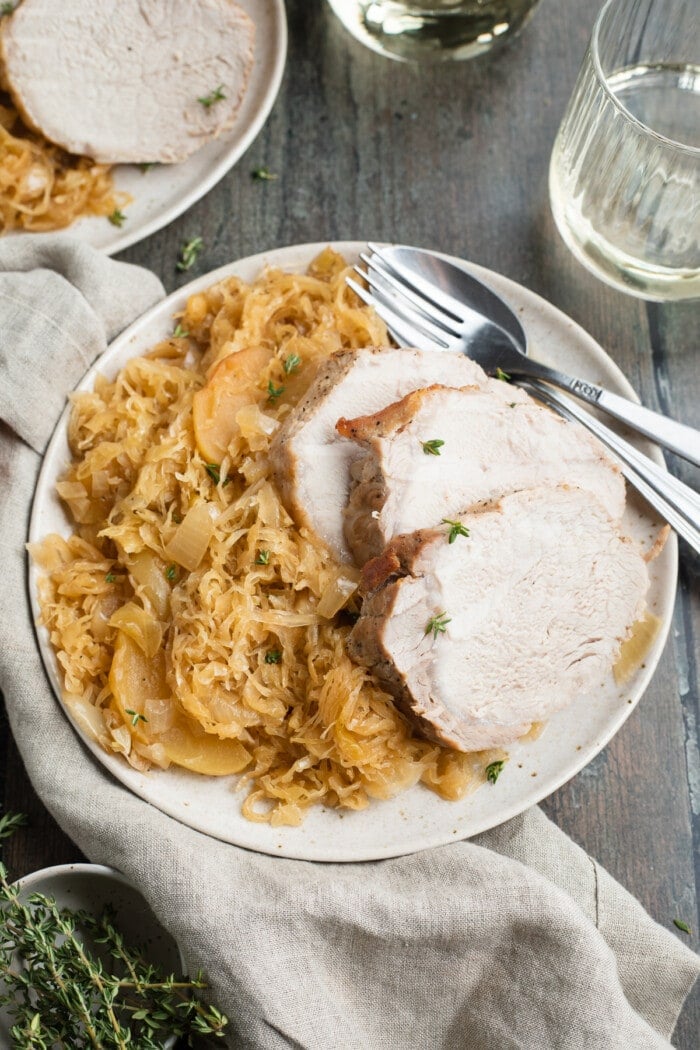
What Makes This Recipe So Good
- It’s surprisingly simple to make! While it may take a while in the oven, this entire dish is super hands-off. First, sear the pork loin, then place it over a bed of sauerkraut, onion, apple, and brown sugar – before it’s off the oven to handle the rest of the work.
- It’s incredibly flavorful, despite requiring only a few ingredients. Salt and pepper go a long way in seasoning this tender pork roast. Meanwhile, tangy sauerkraut, tart apples, and sweet brown sugar take this entire meal up a notch!
- It yields perfectly cooked pork loin roast every time! A large pot traps steam which then cooks the roast to total perfection. This method also ensures the meat absorbs as much delicious flavor as possible while it cooks.
Key Ingredients
Pork Loin Roast – Not to be confused with pork tenderloin, pork loin is a larger cut of meat. The larger pork loin roast is ideal when cooking for a crowd, since it feeds so many! Therefore, either throw together this delicious pork and sauerkraut for your next potluck or dinner party, or as an easy weeknight meal with plenty of leftovers.
Sauerkraut – This fermented food not only tastes good, but is incredibly good for you. The fermentation process yields healthy bacteria which when eaten in this recipe, yields healthy digestion. Sauerkraut is made from thinly sliced cabbage, which is where it gets its delightful crunch. The added texture to this dish is excellent!
Brown Sugar – A touch of brown sugar goes a long way in balancing out the deeply savory flavors in this pork and sauerkraut recipe. Otherwise extremely tangy sauerkraut is toned down and sweetened up with the help of brown sugar. Brown sugar is also deliciously deep and caramel-like in flavor – yum!
Chef’s Tips
- Use a meat thermometer to know when the pork loin is done cooking. To do this, simply insert the thermometer into the largest and thickest part of the meat. Your pork and sauerkraut is done when it reads 150° Fahrenheit!
- Leave the pork to rest for about 15 minutes after cooking. Resting will provide the juices in the pork enough time to reabsorb into the meat, creating an even more flavorful finished dish. Without resting, the juices could immediately run out of the pork when sliced into.
- Serve this pork and sauerkraut however you’d like! I enjoy it entirely on its own, as it’s simple but so perfect. Though it’d also taste great alongside mashed potatoes and maybe even with a side of roasted broccoli.
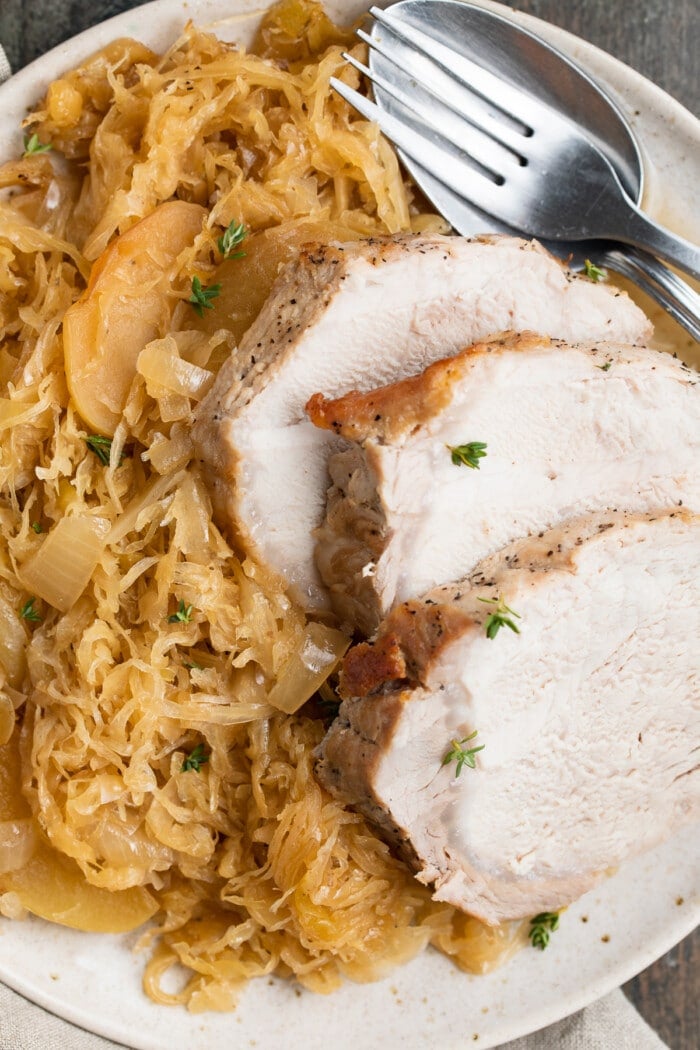
More Roast Recipes You’ll Love
- Instant Pot Pork Roast
- Best Ever Easy Roast Chicken
- Roasted Cauliflower Steak Recipe
- Roasted Potato and Carrots
- Rosemary Roasted Potatoes
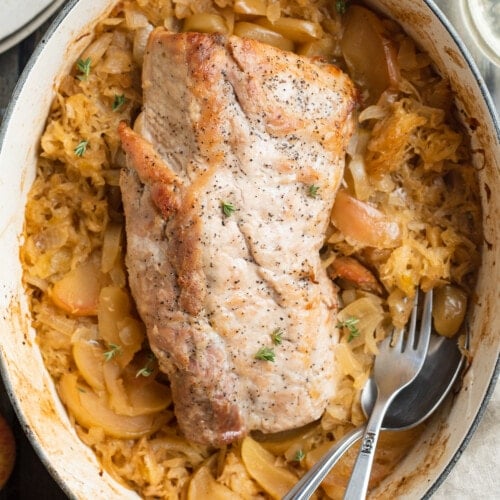
Pork and Sauerkraut
Equipment
- Large pot or Dutch oven
Ingredients
- 2-3 pound boneless pork loin roast
- salt and pepper to taste
- 2 tablespoons butter
- 32 ounces sauerkraut undrained
- 1 onion chopped
- 1 apple cored and chopped
- ½ cup brown sugar
Instructions
- Preheat oven to 400° Fahrenheit. Pat pork loin dry with a paper towel, then season all over with salt and pepper.
- Melt butter in a large pot or Dutch oven on the stove over medium-high heat. Once melted, sear pork in butter until golden brown on all sides.
- Remove pork from pot and remove pot from heat. Add sauerkraut into pot in one even layer, then sprinkle onion, apple, and brown sugar evenly over sauerkraut.
- Place pork loin back into pot, nestled into sauerkraut then cover pot or Dutch oven with lid. Bake for 1 ½ to 2 hours, or until a meat thermometer inserted into pork loin reads 150° Fahrenheit.
- Make it Low-Carb/Sugar-Free: Replace the brown sugar for brown granular Swerve to make this recipe more keto-friendly.
Approximate Information for One Serving
Nutrition Disclaimers
Number of total servings shown is approximate. Actual number of servings will depend on your preferred portion sizes.
Nutritional values shown are general guidelines and reflect information for 1 serving using the ingredients listed, not including any optional ingredients. Actual macros may vary slightly depending on specific brands and types of ingredients used.
To determine the weight of one serving, prepare the recipe as instructed. Weigh the finished recipe, then divide the weight of the finished recipe (not including the weight of the container the food is in) by the desired number of servings. Result will be the weight of one serving.
Did You Make This Recipe?
Tag @40aprons on Instagram and be sure to leave a review on the blog post!
Never Miss A Meal!
New Recipes Straight To Your Inbox
A curated selection of our most recent recipes, delivered straight to your inbox once a week.
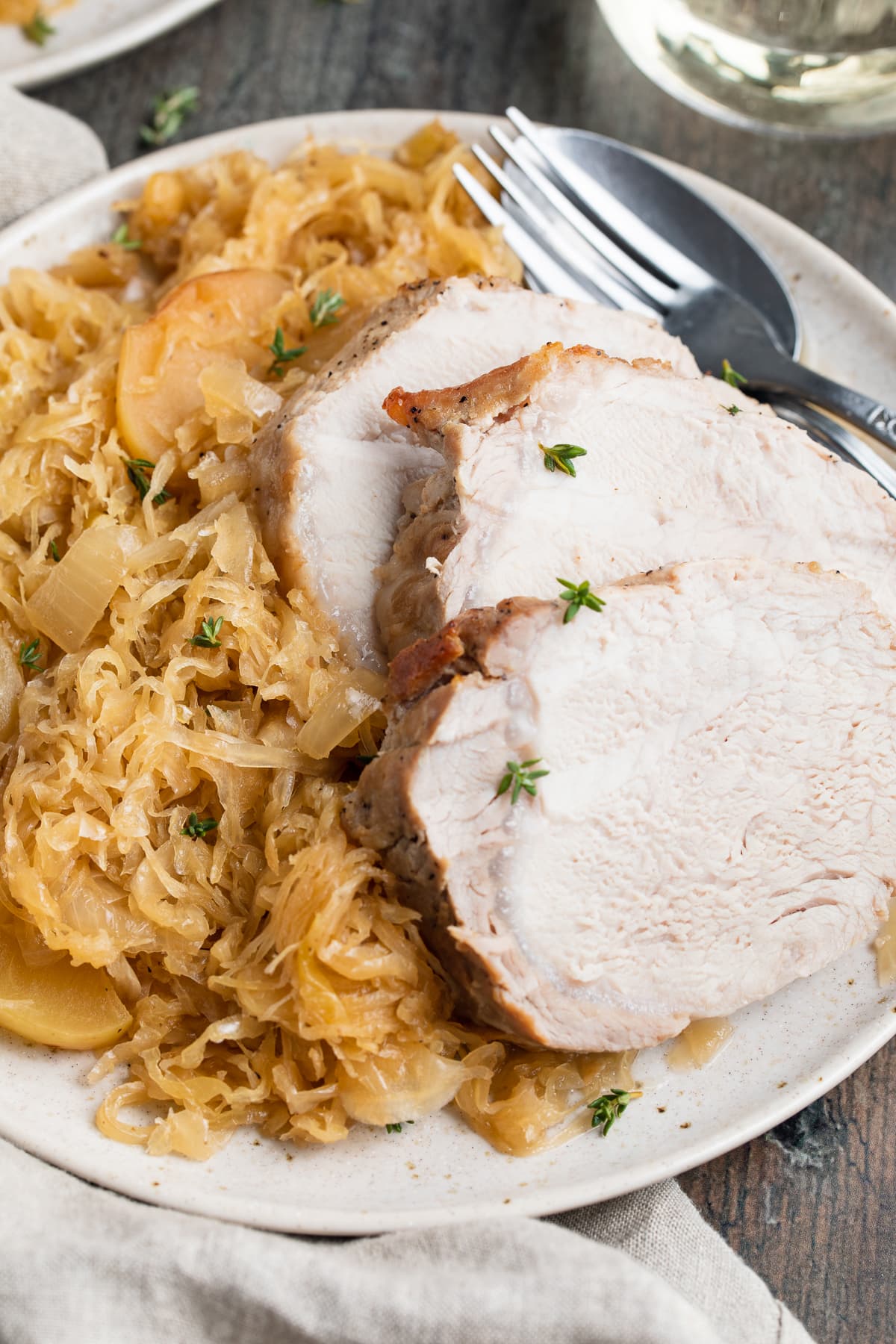
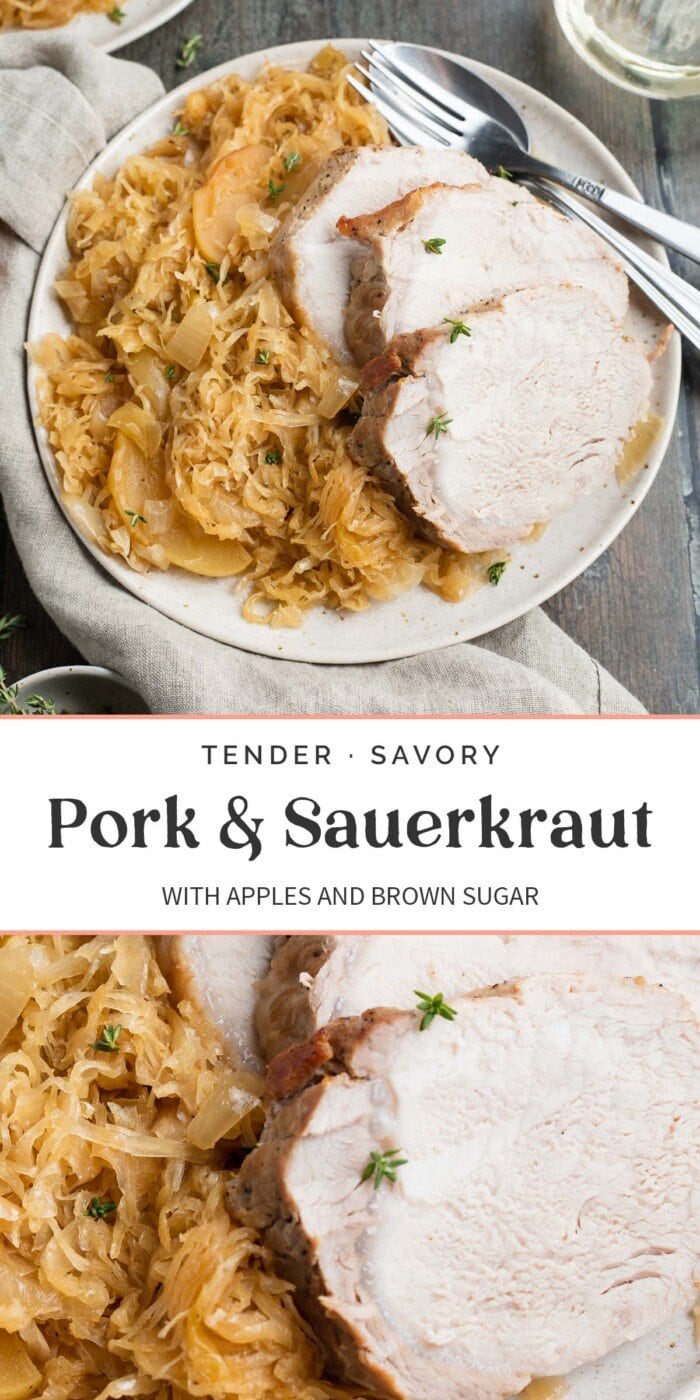
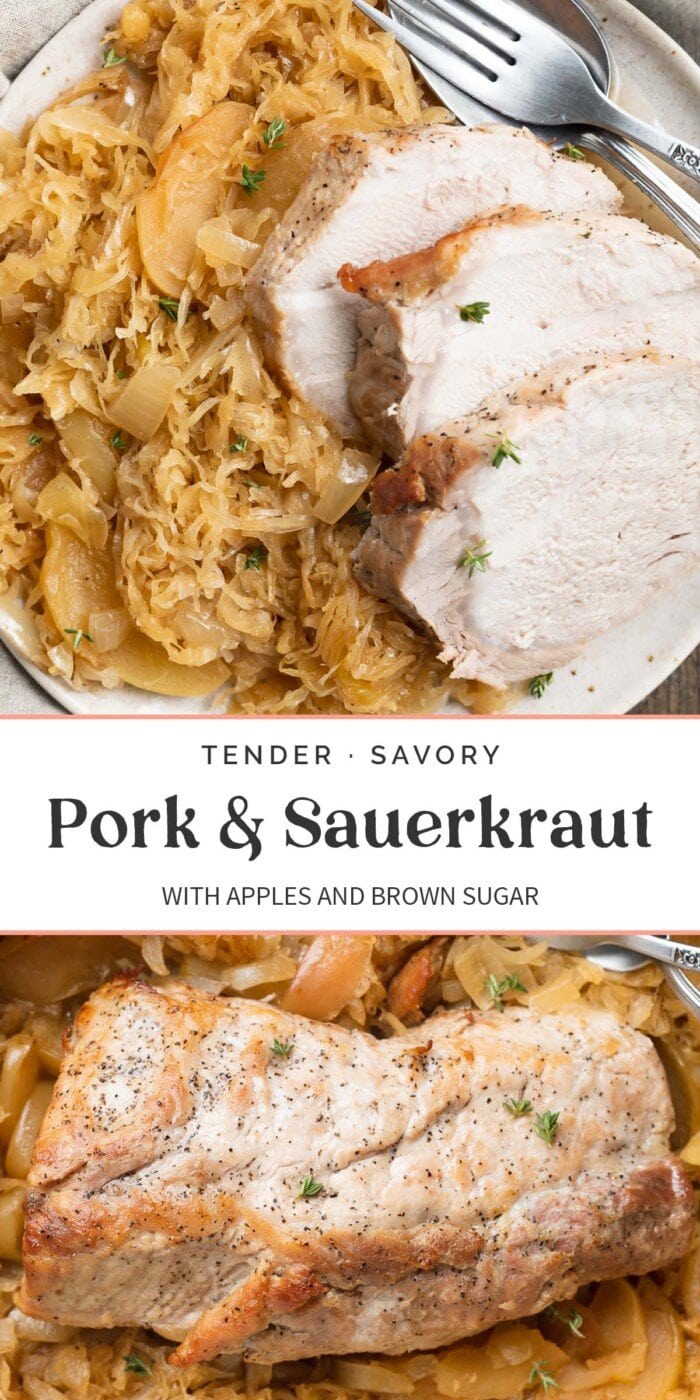
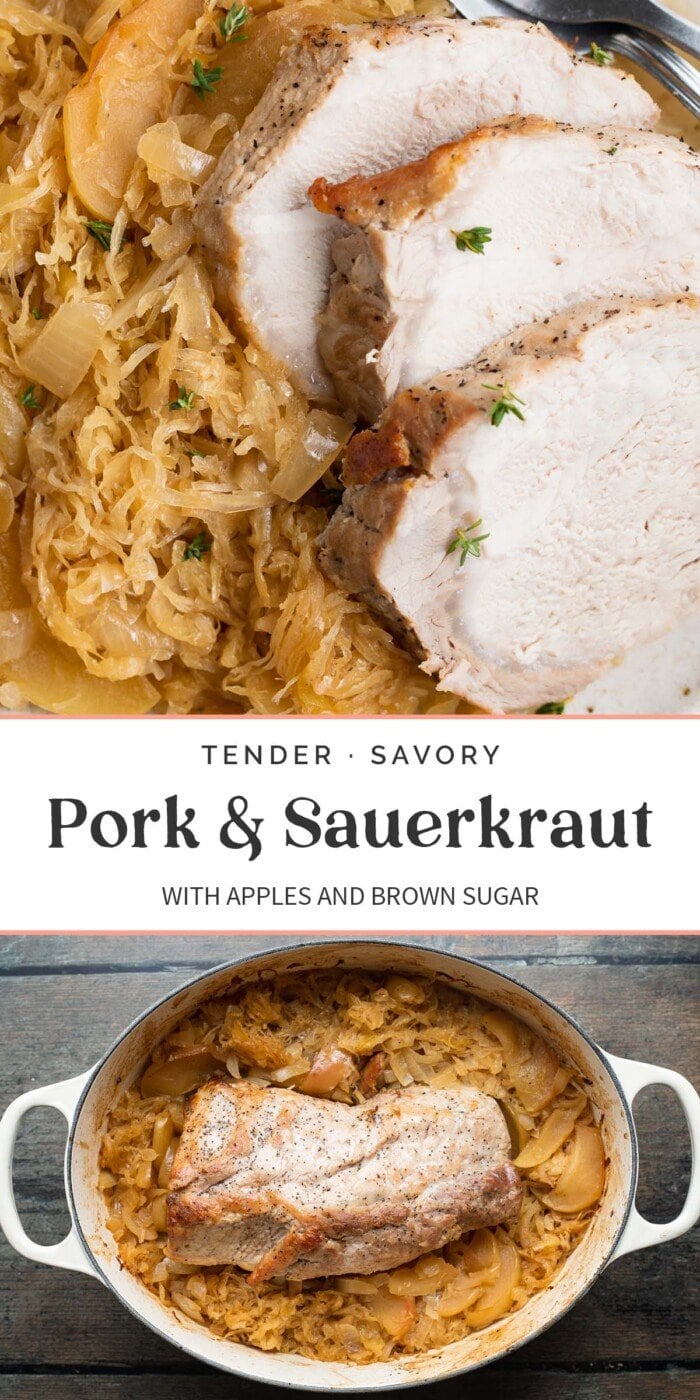
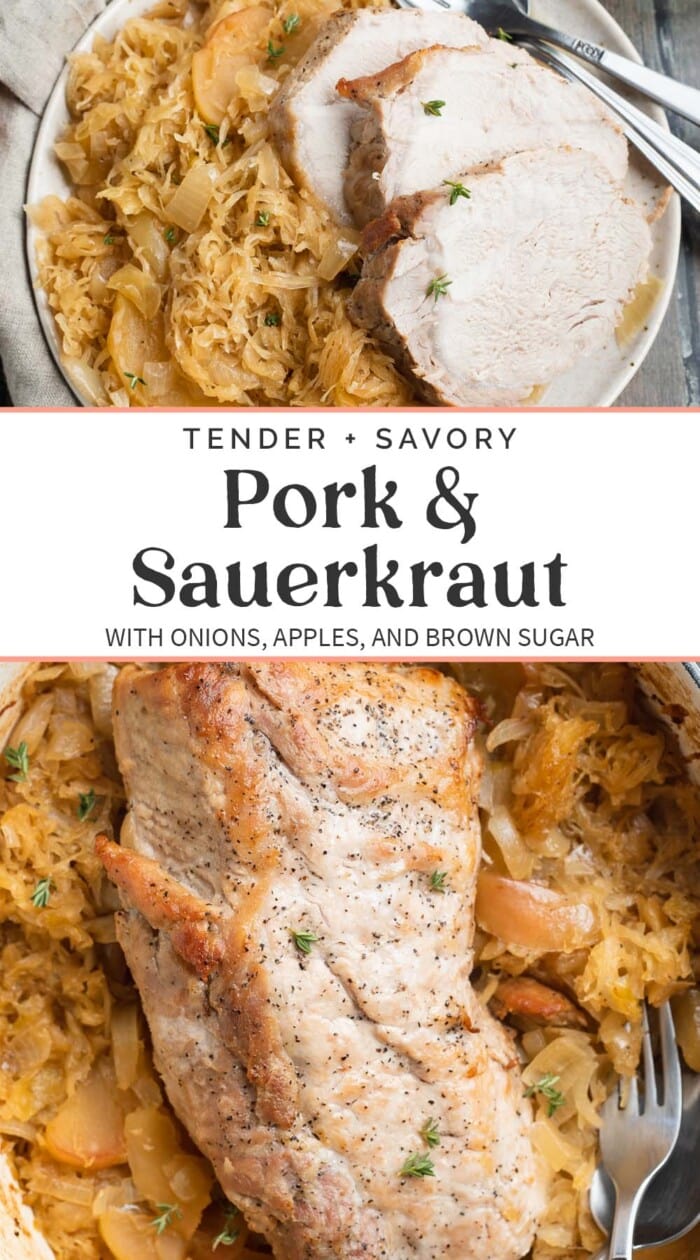
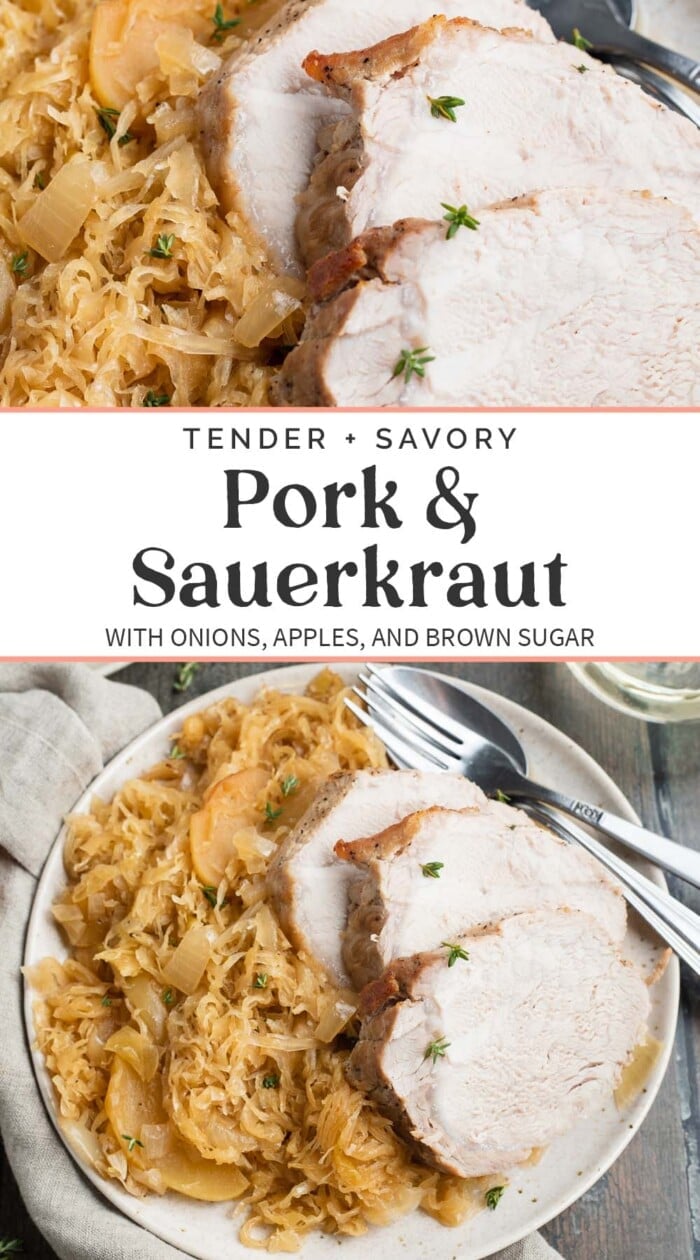
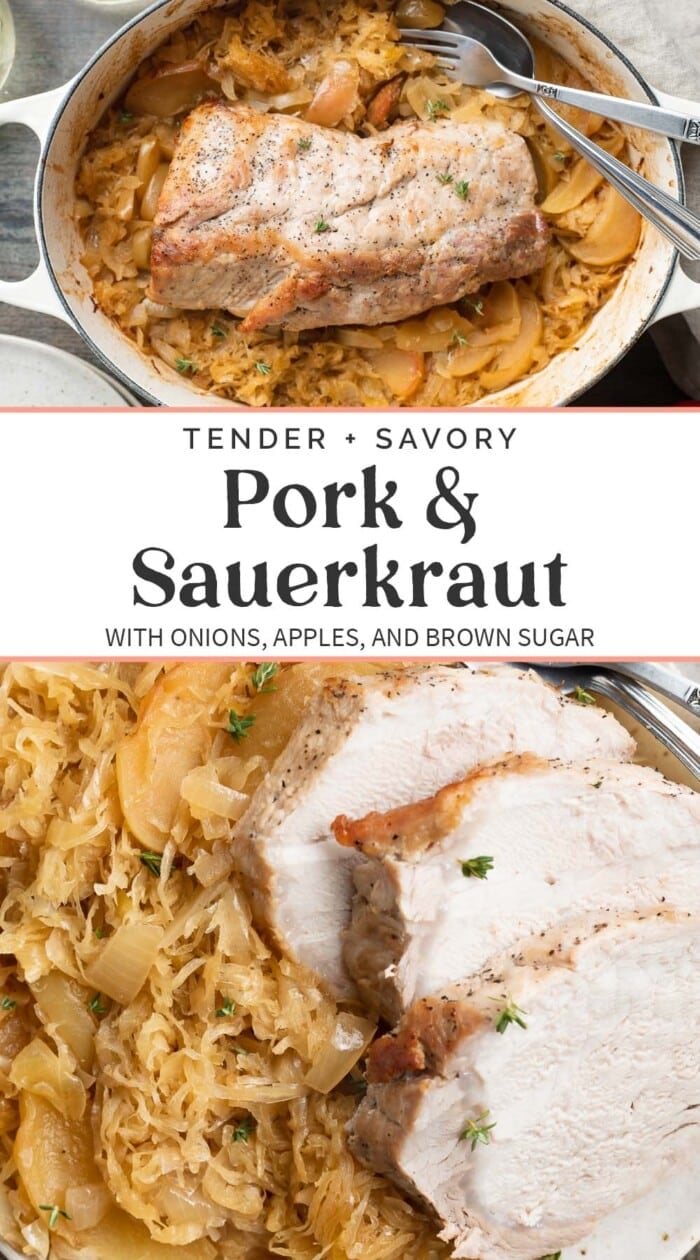
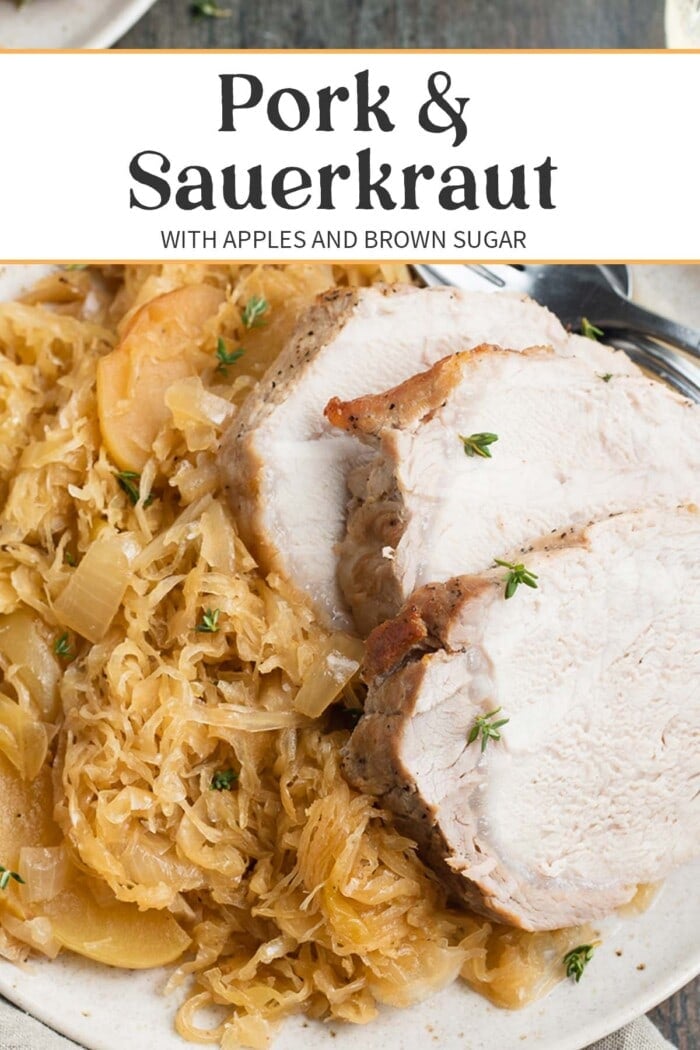
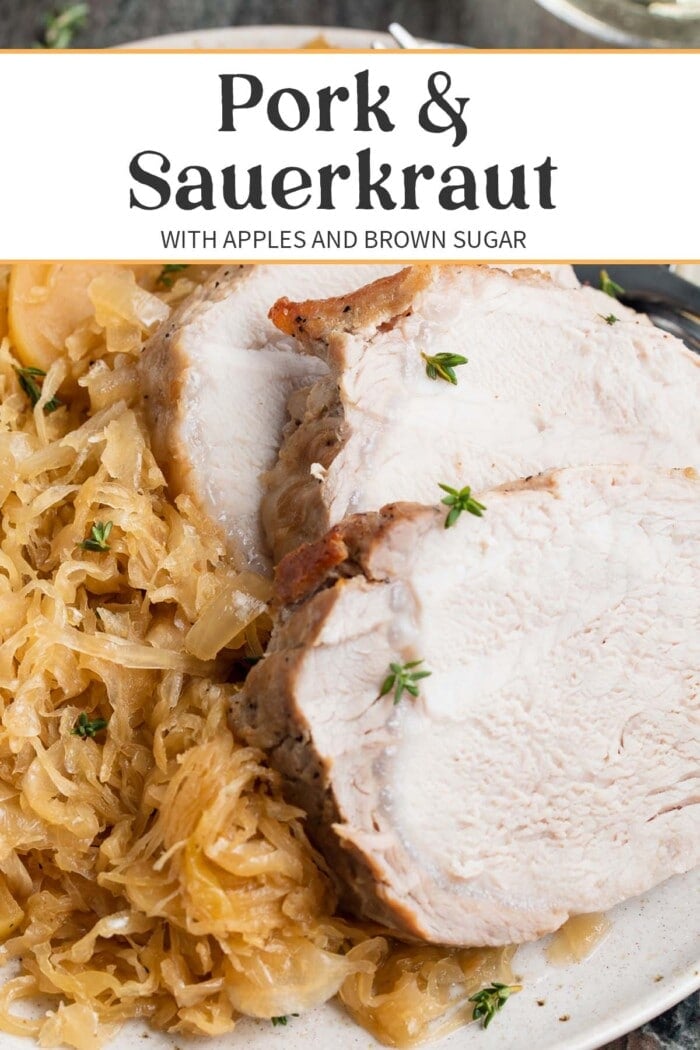
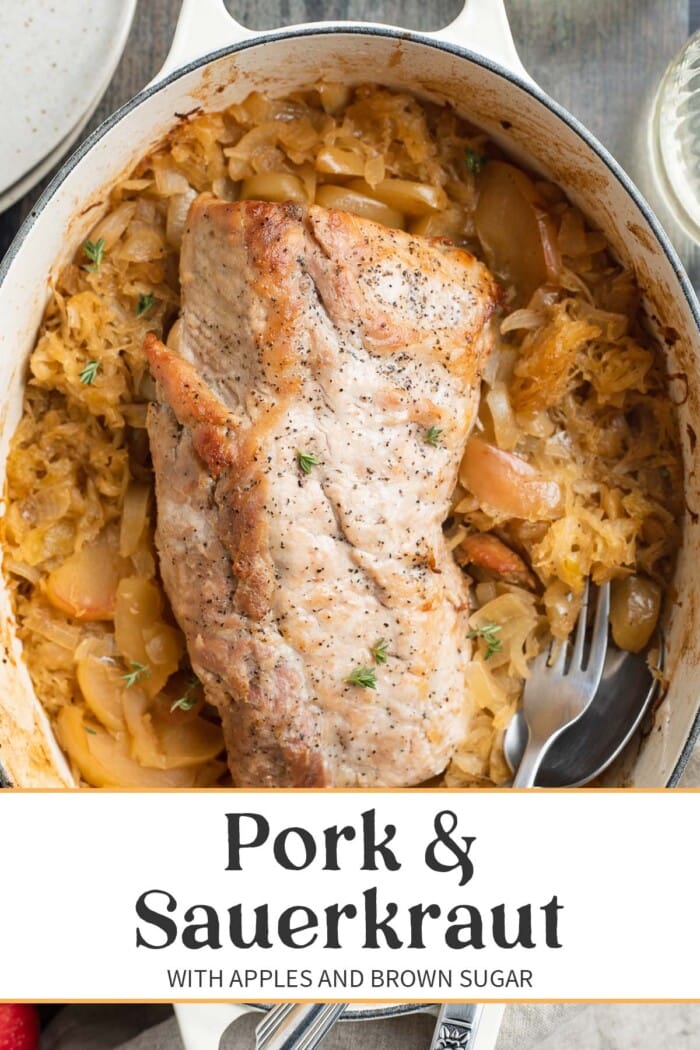
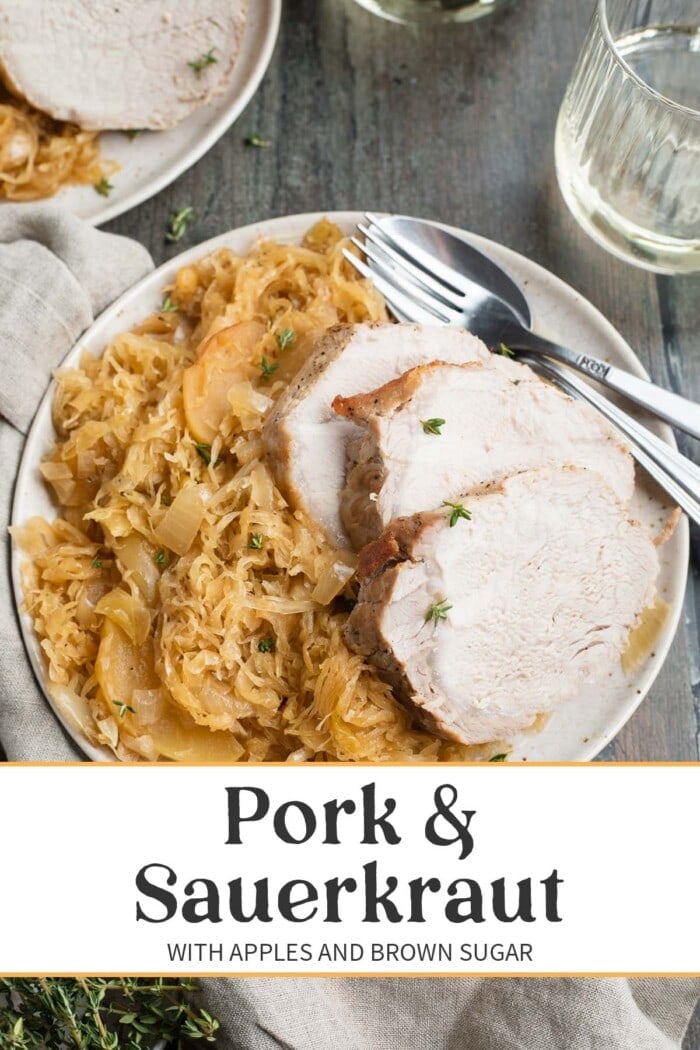
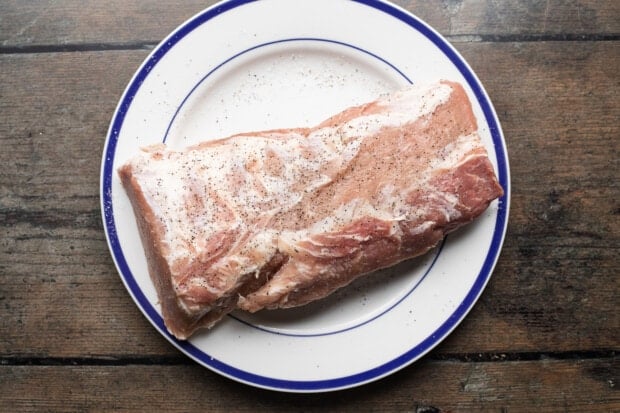
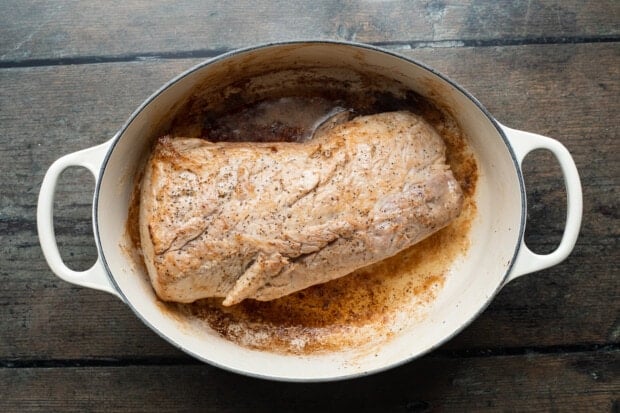
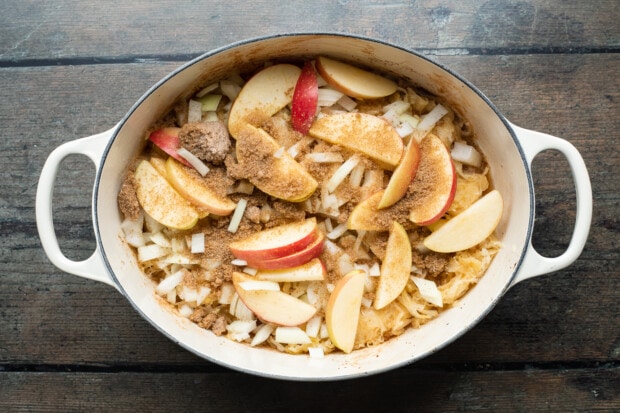
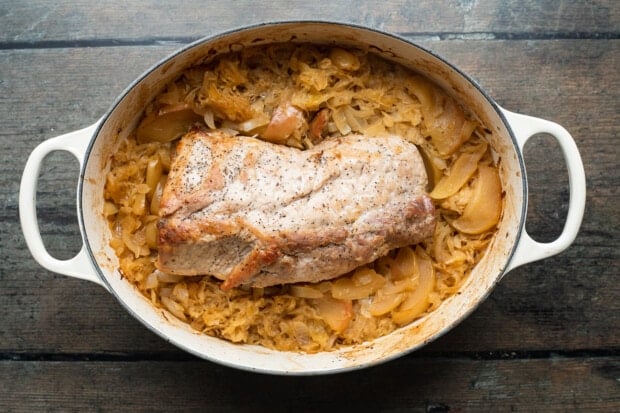

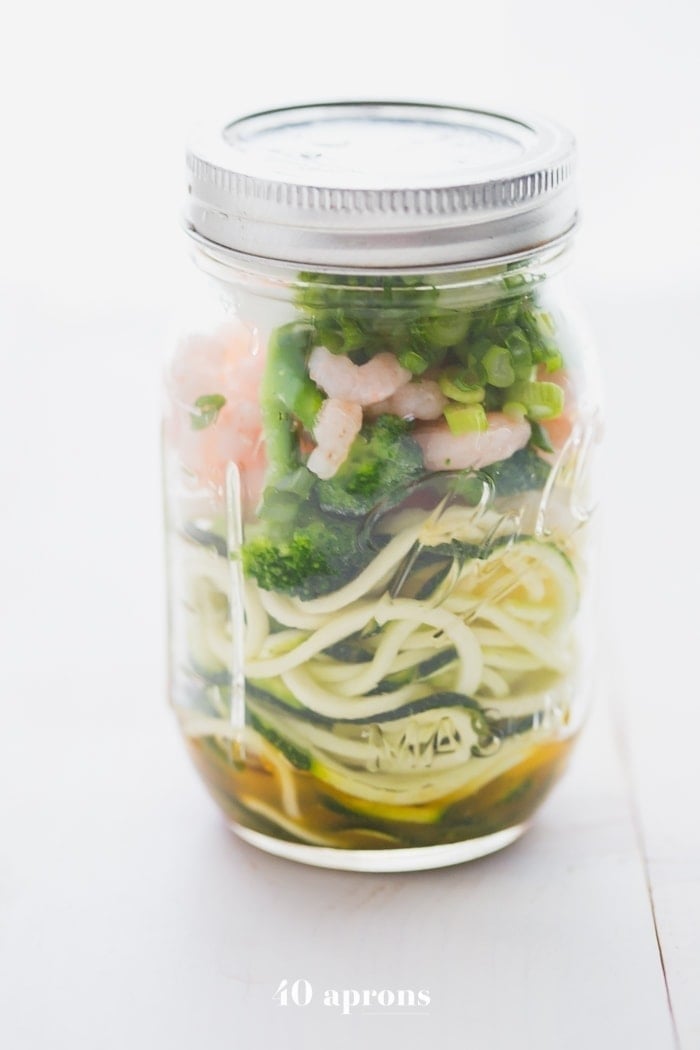
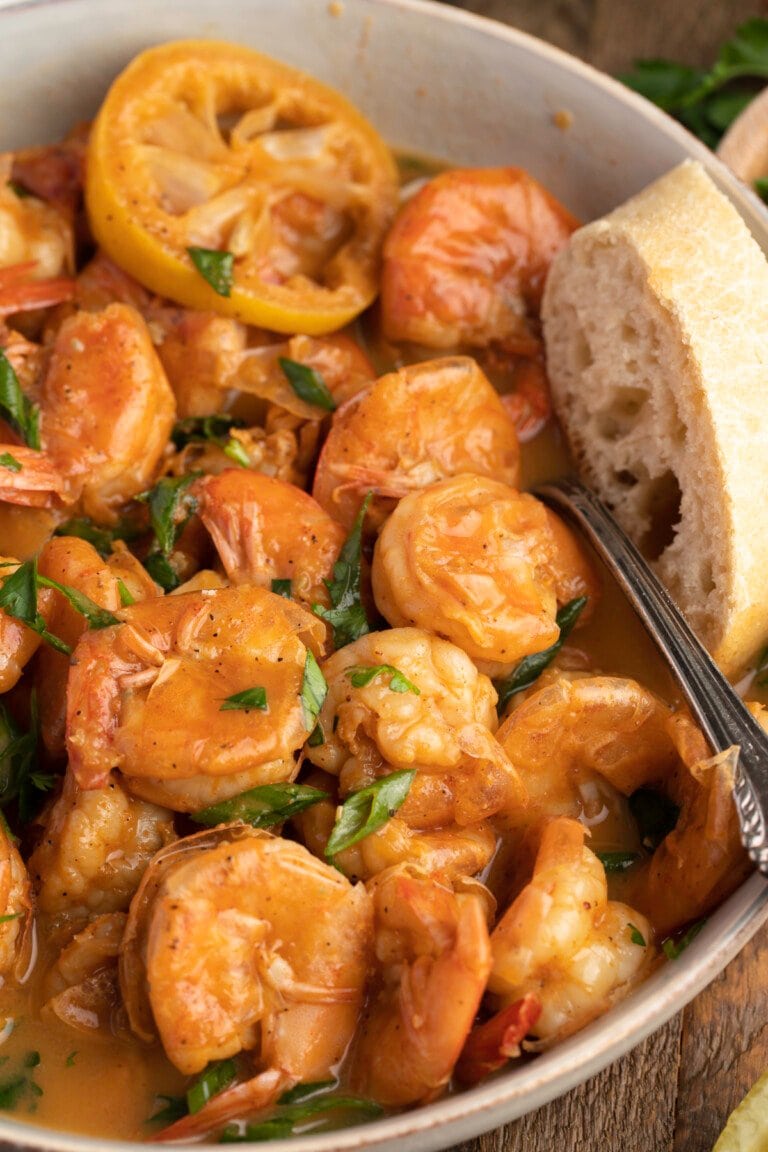
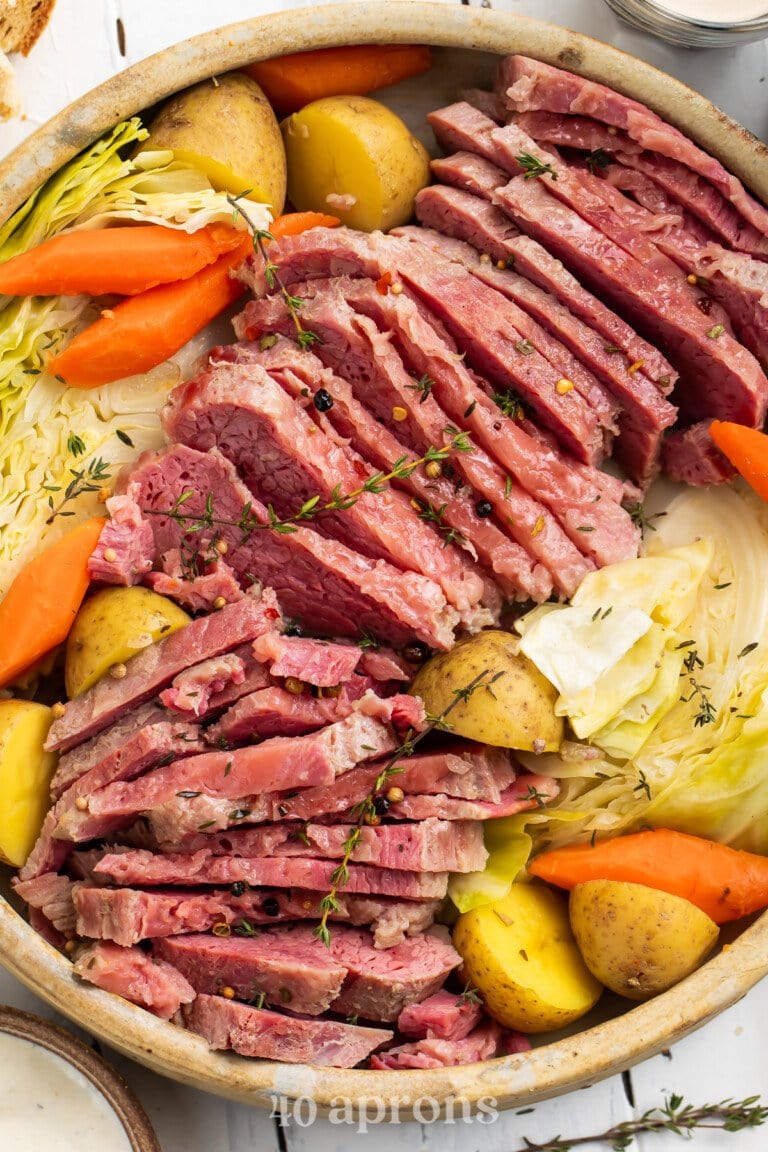
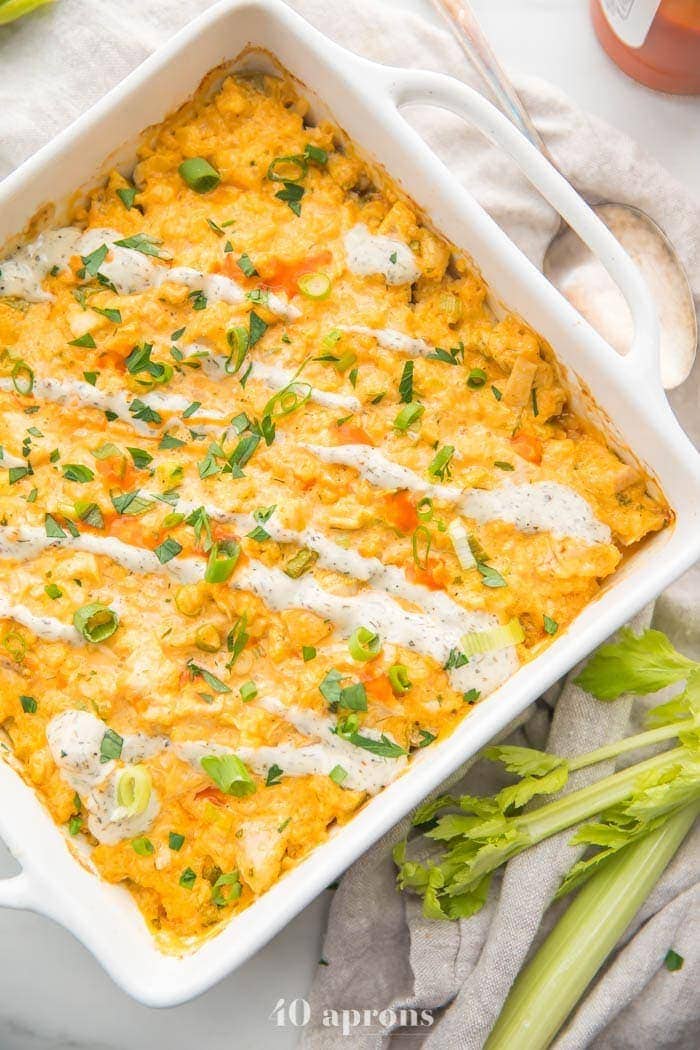











My 3.5 pound pork loin with sauerkraut was very good! Wonderful flavor. I may turn the temp down to 350 next time. My roast was just a bit dry cooking 1 1/2 hours, but delicious none the less!
We’re so glad you enjoyed it!